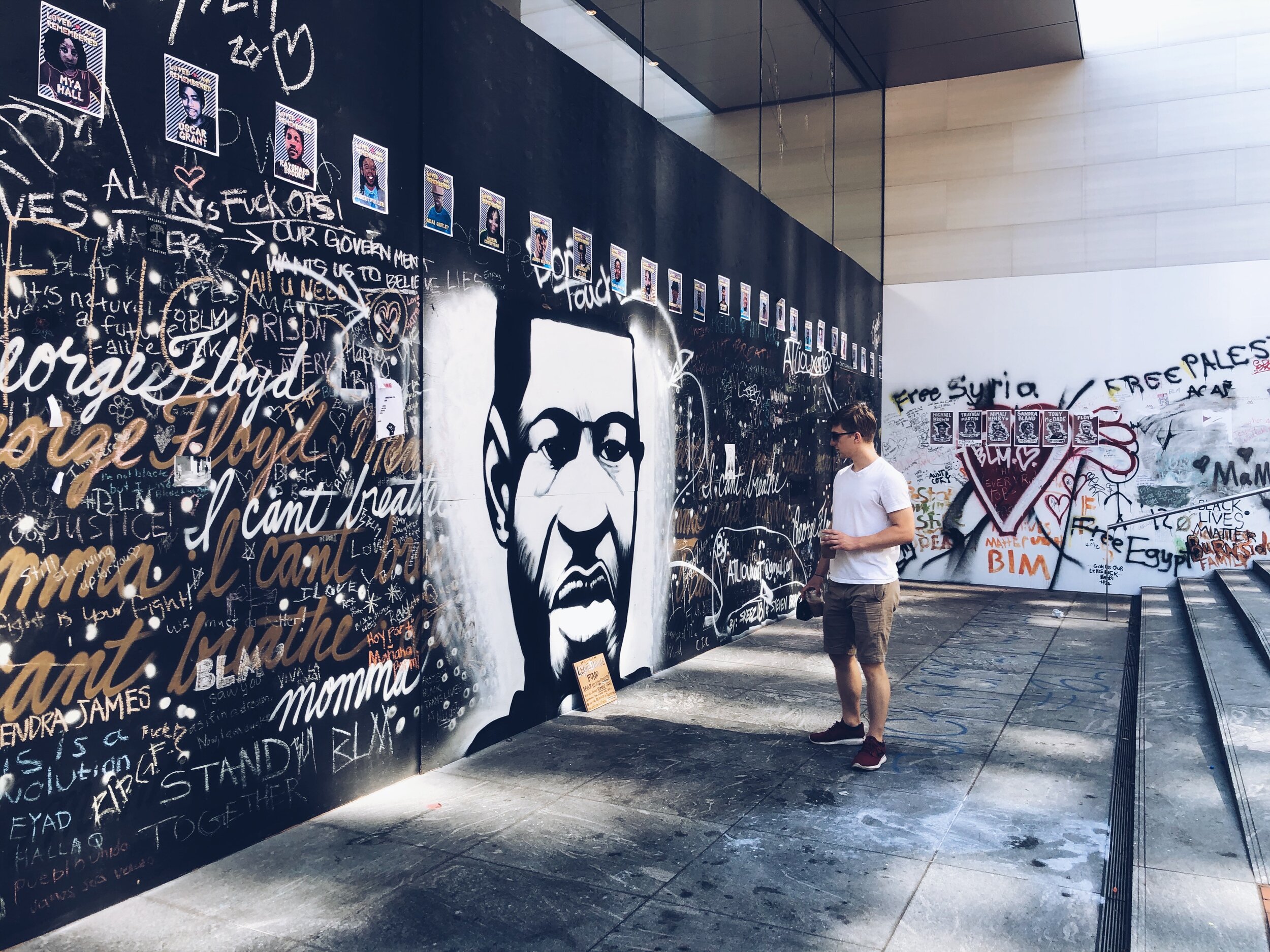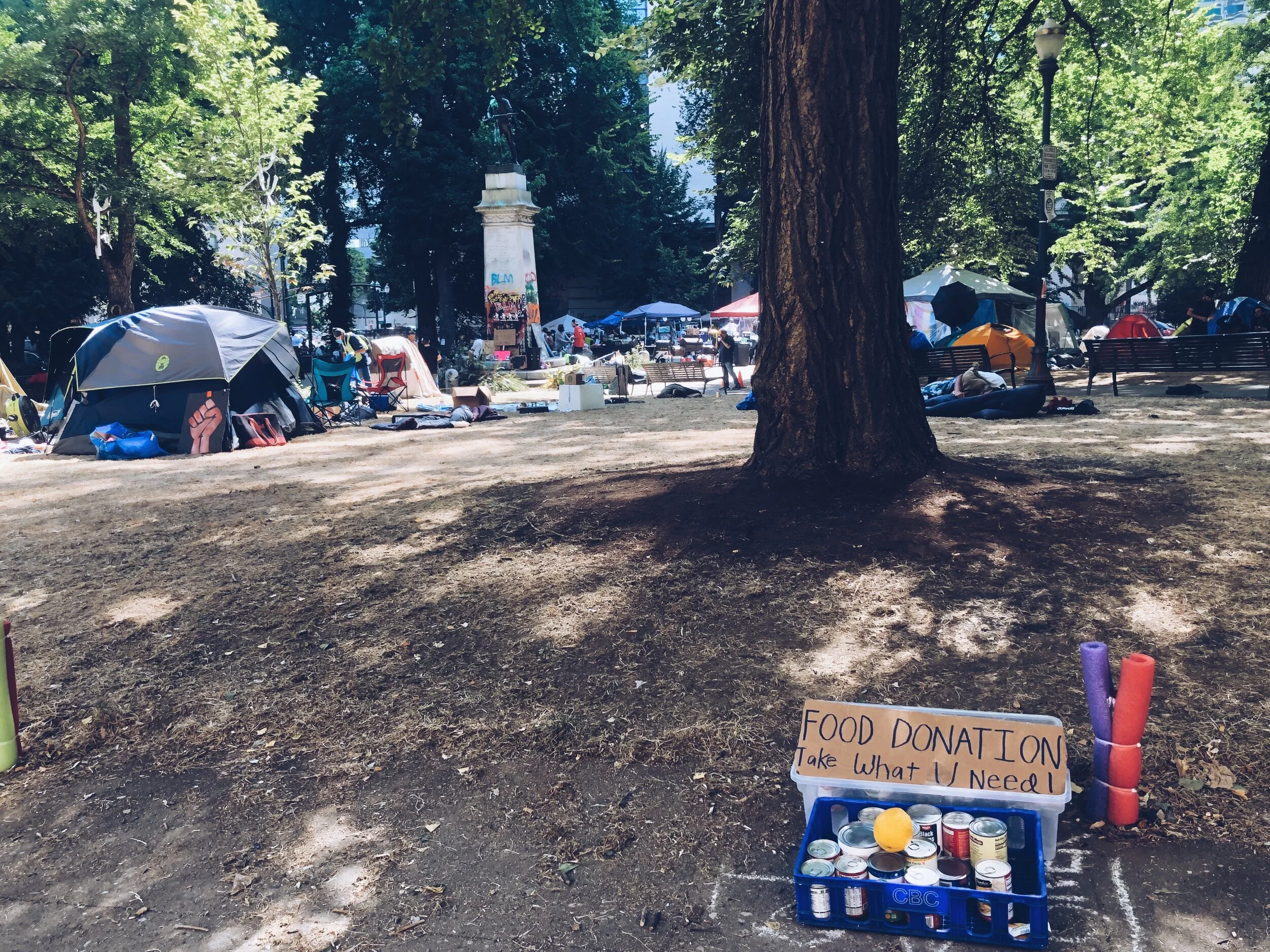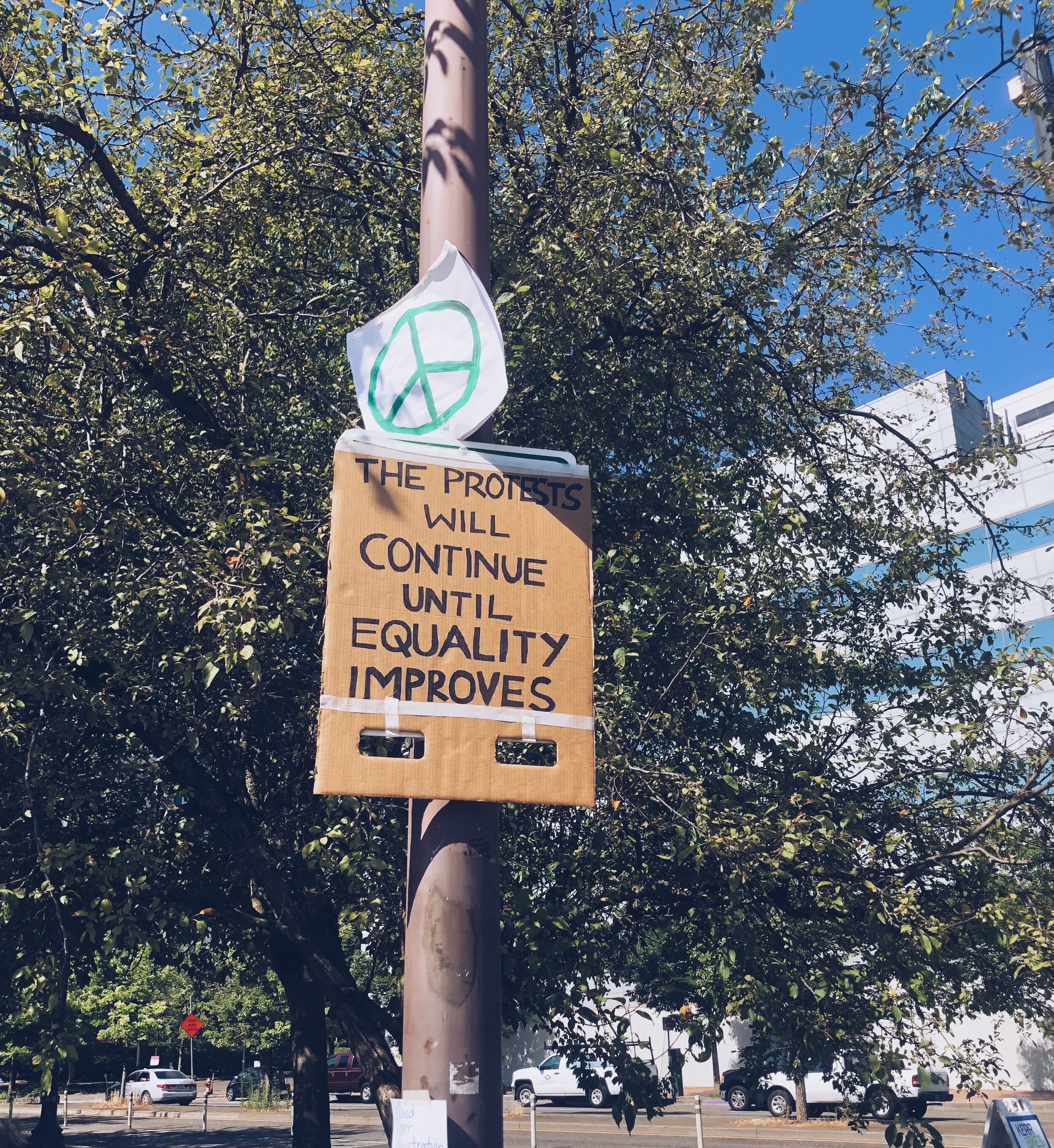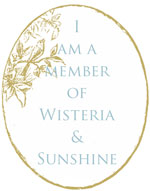Portland, July 27, 2020
/I have good news: Portland is not burning or trashed! It’s the same old complicated, messy, beautiful, wonderful city it always was. My son and I walked around this morning, about 5 hours after the last protest ended, just to get some pictures and to spread some love. We bought coffees from a favorite spot, searched high and low for a bathroom (seriously, the lack of public bathrooms might be the most unexpected horror of the pandemic, amiright?), sat in the sun at Pioneer Courthouse Square, drooled outside Powell’s Books (which is only open for online orders), and then went to the protest block (yes, one main block) and got a little tear gas residue and a little teary-eyed.
A brief tour of Portland this morning:
Everything’s pretty empty because of the pandemic.
Pioneer Courthouse Square. (It doesn’t usually have polka dots. That’s just a happy art installation.)
Murals outside the Apple store and down the block. Most of these businesses have been closed since the Stay-Home orders.
This is the block right before the protest zone. You can see some graffiti on the parking structure across the street.
This is the Federal Courthouse building where most of the action takes place. It’s made of concrete and marble. It would be very hard to burn it to the ground, even if people were actually trying to do that.
People cleaning up trash in the street.
The end of the block. The buildings you can see further down are also Federal buildings, but we didn’t see much graffiti or damage there.
This is the park across the street from the Federal Courthouse. Protestors have food and medical stations set up here. There’s a lot of talk about businesses suffering from the protests, but this 3 block area is mostly Federal buildings and parks and most businesses downtown are closed or limited service because of the pandemic, so I’m not sure how many are being directly affected by the protests at night.
And that’s it. It’s a strange thing to watch somewhere you love on the news, to hear lies about it and watch it become a pawn in a political battle. It makes your heart grow bigger for that place, makes you want to shield it and defend it. That’s why I went downtown myself today. I can’t control a government’s actions any more than I can control an individual protestor’s actions, but I can witness reality, and I can carry love and peace with me and release it into these precious streets.
(A reading suggestion for such a time: Ilya Kaminsky’s parable in poetry : Deaf Republic)























